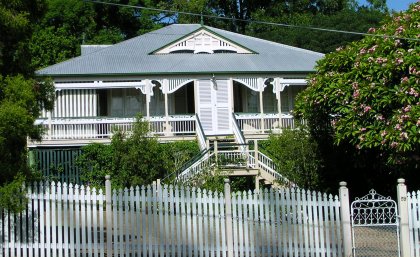
Brisbanites love their Queenslander-style homes, valuing them for their history, aesthetic pleasure and climatic comfort, according to University of Queensland research.
UQ’s Dr Dorina Pojani and Vanessa Neilsen set out to solicit the views of Brisbane residents regarding the preservation of the houses, which were built in the late nineteenth century to the early twentieth century.
“Through in-depth interviews with 20 participants, we sought to determine whether owner-occupiers of Queenslanders value this heritage and why,” Dr Pojani said.
“We wanted to know whether they’re actively engaged in the protection of this heritage, and if so, what their motivations are.
“What we found is that Queenslanders are valued on multiple levels.
“The love of beauty and craftsmanship has motivated most interviewees to purchase a Queenslander.
“Several interviewees cited a desire to recreate the past in place, and strengthen historical connections and conceptions of place – in planning circles, we call this ‘placemaking’.
“Finally, the value of climate-friendly design in Queenslanders is being rediscovered.
“Interviewees report loving the natural light and airflow of their homes, the versatile timber framing and the deep verandas, which keep the houses cool in summer and can also be used for sleeping during hot nights.”
While maintaining an older home involves a substantial amount of time and money – available mostly to the middle-class and middle-aged groups – this is viewed as fair, considering the benefits of living in a Queenslander.
“Brisbane residents truly love their Queenslanders and they’re very protective of the role of the Queenslander in the urban community,” Dr Pojani said.
“Residents believe that the local government can and should do more to protect what is left of the historical housing stock.
“However, one portion of the public only cares to preserve the outer shells of heritage homes, while extensively renovating and modernising interiors.
“And a concern for heritage is sometimes used as a screen for antagonism toward any type of development, a result of not-in-my-backyard sentiment, or ‘NIMBYism’.
“As a growing city, Brisbane needs to navigate a fine line between increasing the supply of apartment units and preserving the character of – traditionally lower-density – local neighbourhoods.”
The research has been publishing in the Journal of Housing and the Built Environment (DOI: 10.1007/s10901-020-09767-z).
Media: Dr Dorina Pojani, d.pojani@uq.edu.au, +61 473 989 847; Dominic Jarvis, dominic.jarvis@uq.edu.au, +61 413 334 924.
.jpg)












